🧑🏫 Things to Know
Branches, Nutritive value, Daily requirement, Important Horticultural Institutes
- The term Horticulture is derived from the Latin words:
hortusmeaning garden andculturameaning cultivation. - Horticulture may be defined as the science and technique of production, processing and merchandizing of fruits, vegetables, flowers, spices, plantations, medicinal and aromatic plants.
Branches of Horticulture
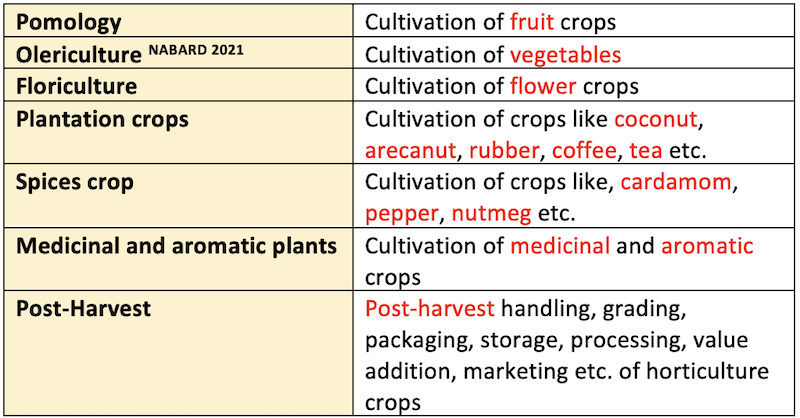
Important Horticultural Institutes

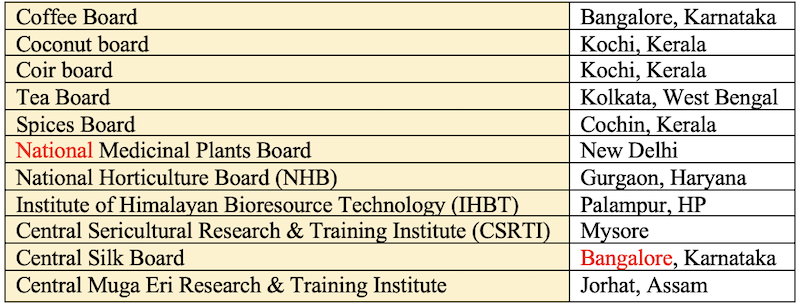
Nutritive value of fruits and vegetables
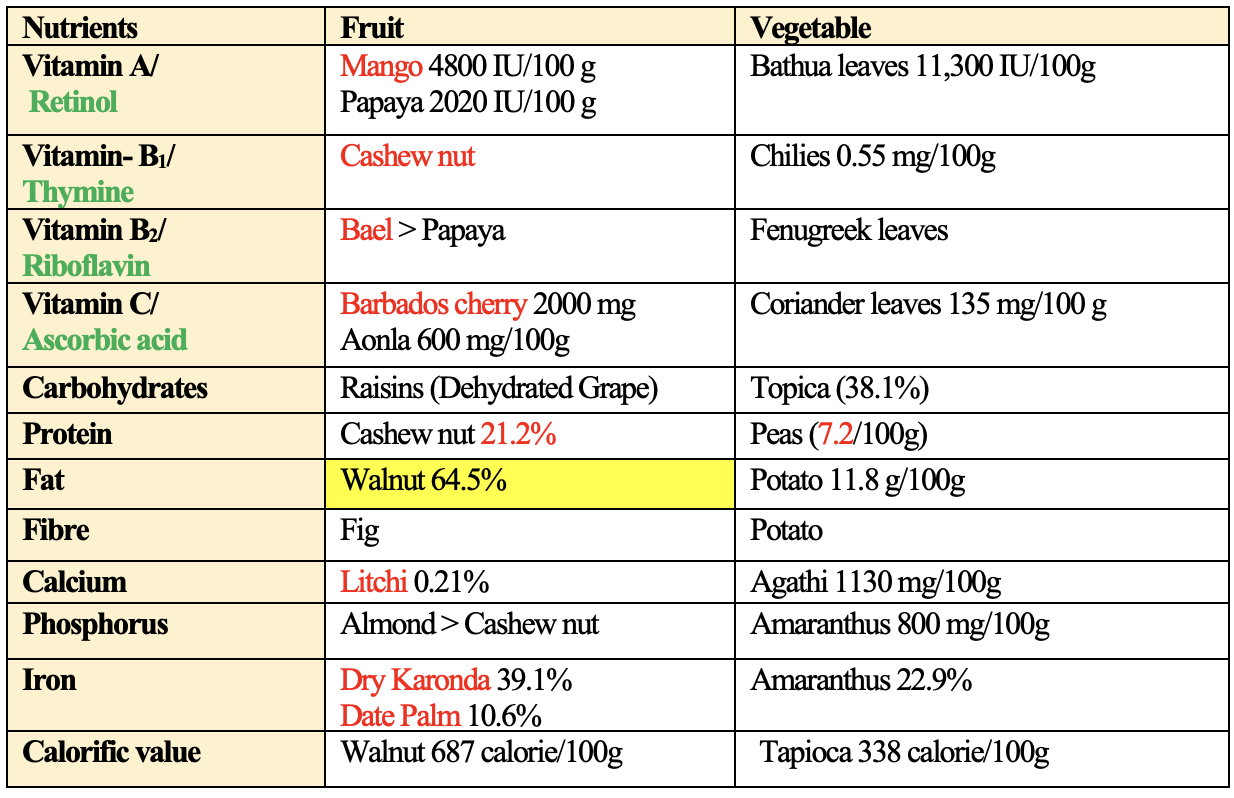
Daily requirement: Per day per capita
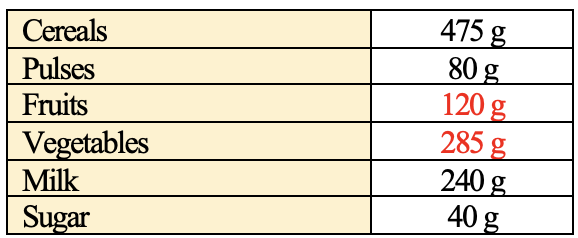
Difference between fruits and vegetables
- Fruits and vegetables are classified from both a botanical and culinary standpoint.
- Botanically, fruits and vegetables are classified depending on which part of the plant they come from.
- A fruit develops from the flower of a plant, while the other parts of the plant are categorized as vegetables.
- Fruits contain seeds, while vegetables can consist of roots, stems and leaves.
- From a culinary perspective, fruits and vegetables are classified based on taste.
- Fruits generally have a sweet or tart flavor and can be used in desserts, snacks or juices.
- Vegetables have a more mild or savory taste and are usually eaten as part of a side dish or main course.
Classification of fruits
👉🏻 The following are the various types of classification:
- Climatic adaptability
- According to Fruit ripening
- Rate of respiration
- Photoperiodic responses
- Relative salt tolerance
- Acid present in fruit crop
Climatic Adaptability
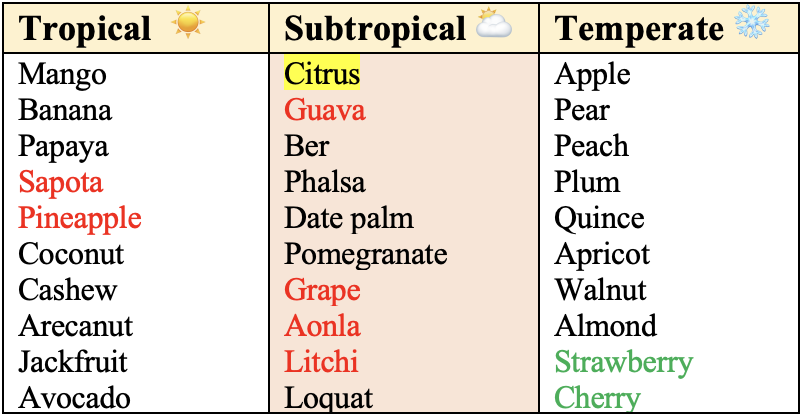
- *However, this choice is not very rigid as some tropical crops which can be grown in Subtropics and vice versa.
Arid zone fruits
- Ber
- Aonla
- Pomegranate
- Fig
- Phalsa
Shade Tolerant

According to fruit ripening condition
👉🏻 Based on this, the fruits can be classified as Climacteric fruits and Non-climacteric fruits.
- The climacteric fruits can ripe
after removingthem from the plants on the other hand non-climacteric fruits are those which don’t ripe after picking. - Now, the ripening process is related to the production of ethylene in plants.
- Climacteric species produce ethylene as they ripen, and the harvested produce is capable of ripening during the postharvest period.
- These commodities, such as bananas, apples, and peaches, tend to get sweeter and softer after harvest.
- Non-climacteric plants, such as leafy vegetables, do not continue to ripen after harvest; they will soften and rot, but this is due to moisture loss, decay, and tissue deterioration.
- Thus, Climacteric fruits produce much larger amount of ethylene than non-climacteric fruits.
Climacteric Fruits

Classification based on ethylene production

- Highest ethylene production seen in
Apple(25— 2500 uL/L);Passion fruit(466-530 uL/L);
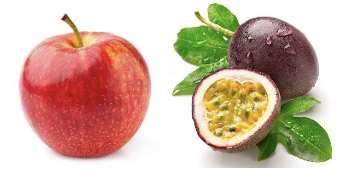
Classification based on Respiration
- Despite having been detached from the plant, fruits and vegetables remain as living organs after harvest.
- Like all living tissues, harvested produce continues to respire throughout its postharvest life.
- During the process of respiration, carbohydrates are broken down to their constituent parts to produce energy to run cellular processes, thus keeping the cells and organism alive.
- Throughout this process, oxygen is consumed and water, carbon dioxide, and energy are released.
- Because this process occurs from harvest to table, the carbohydrates stored in the harvested plant portion are continually “burned” as energy to keep the vegetable alive; as respiration continues, compounds that affect plant flavor, sweetness, weight, turgor (water content), and nutritional value are lost.
- Thus, reducing the rate of respiration is an important consideration in extending the postharvest life of a fruit or vegetable and optimizing postharvest quality.
- Harvested fruits and vegetables of different plants have different rates of respiration; some respire at a faster rate (and thus are more perishable vegetables), while some respire at a relatively slow rate (less perishable vegetables) (see table below).
- In addition, storage conditions affect respiration, with higher temperatures leading to a faster rate of respiration; for every 10°C (18°F) rise in temperature, the respiration rate will double or even triple.
- Because of the significant effect of temperature on respiration, the amount of time a harvested product is exposed to heat should be minimized; the fruit or vegetable should be quickly brought to its optimal storage temperature.
Classification based on the respiration rate

- In the case of Climacteric fruits, there is a sharp rise in respiration after harvesting.
- In the case of Non-climacteric fruits, there is steady respiration at the time of harvesting.
Classification based on Photoperiodic responses

Classification based on relative salt tolerance

Acid present in fruit crops

Causes of colour/bitterness in fruits/vegetables

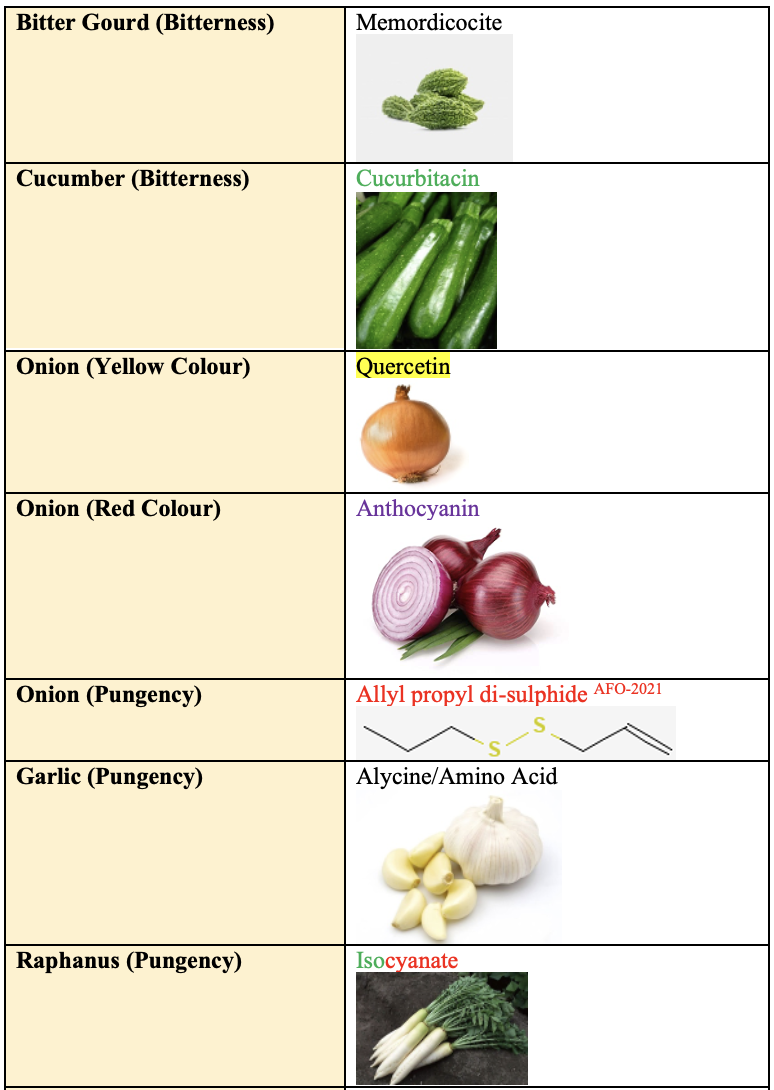

- The term Horticulture is derived from the Latin words:
hortusmeaning garden andculturameaning cultivation. - Horticulture may be defined as the science and technique of production, processing and merchandizing of fruits, vegetables, flowers, spices, plantations, medicinal and aromatic plants.
Branches of Horticulture

Important Horticultural Institutes


Nutritive value of fruits and vegetables

Daily requirement: Per day per capita

Difference between fruits and vegetables
- Fruits and vegetables are classified from both a botanical and culinary standpoint.
- Botanically, fruits and vegetables are classified depending on which part of the plant they come from.
- A fruit develops from the flower of a plant, while the other parts of the plant are categorized as vegetables.
- Fruits …
Become Successful With AgriDots
Learn the essential skills for getting a seat in the Exam with
🦄 You are a pro member!
Only use this page if purchasing a gift or enterprise account
Plan
Rs
- Unlimited access to PRO courses
- Quizzes with hand-picked meme prizes
- Invite to private Discord chat
- Free Sticker emailed
Lifetime
Rs
1,499
once
- All PRO-tier benefits
- Single payment, lifetime access
- 4,200 bonus xp points
- Next Level
T-shirt shipped worldwide

Yo! You just found a 20% discount using 👉 EASTEREGG

High-quality fitted cotton shirt produced by Next Level Apparel